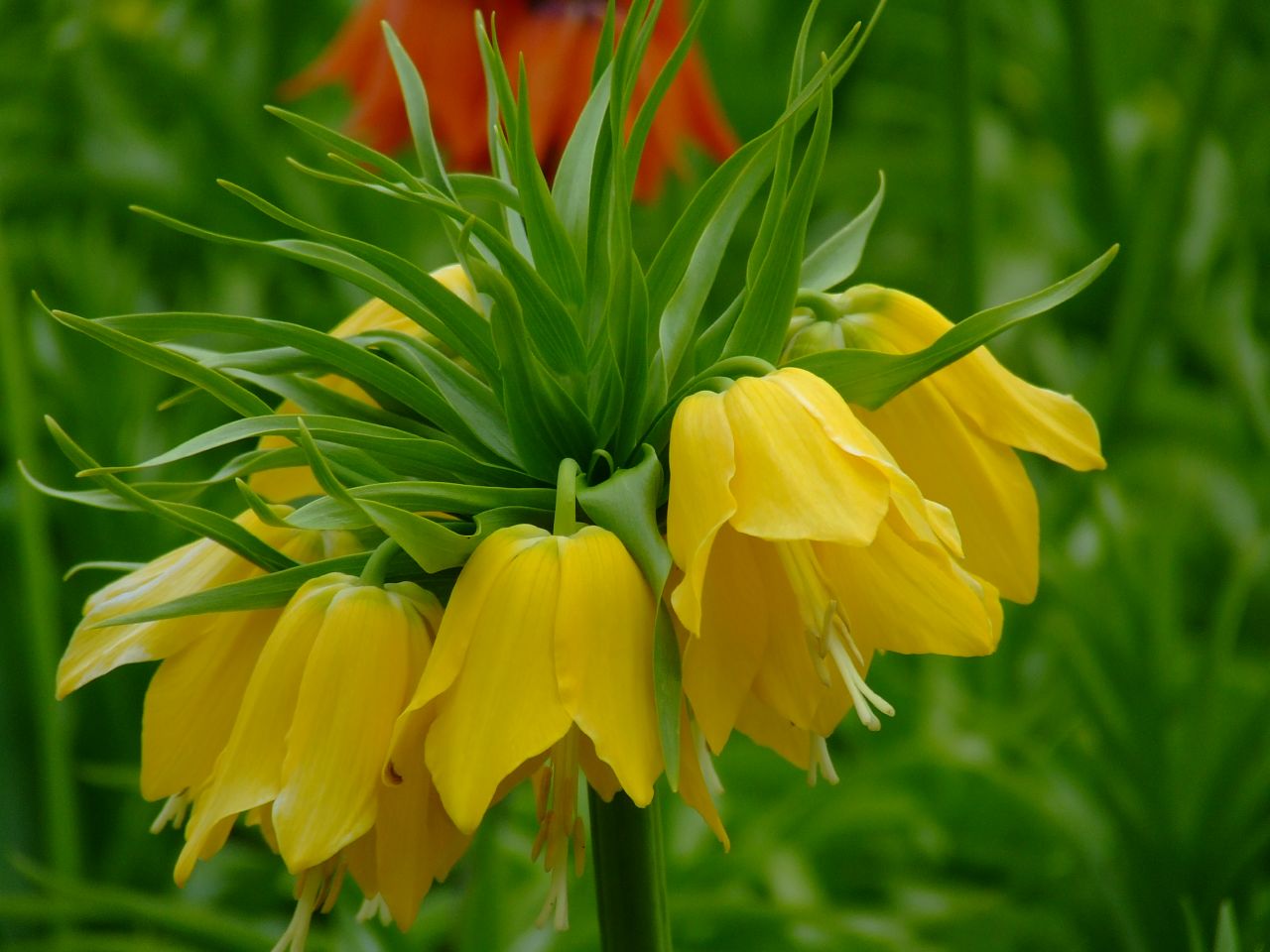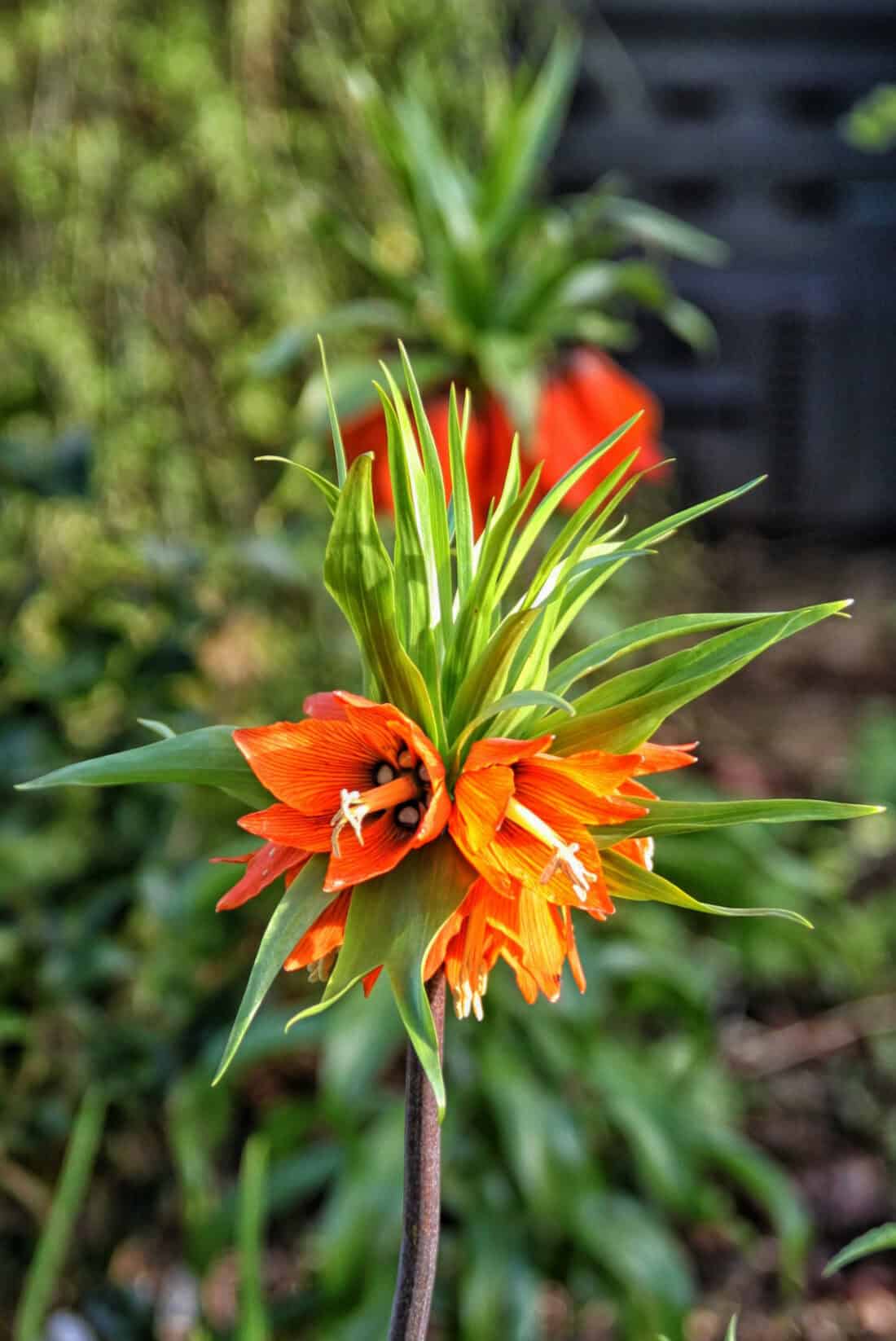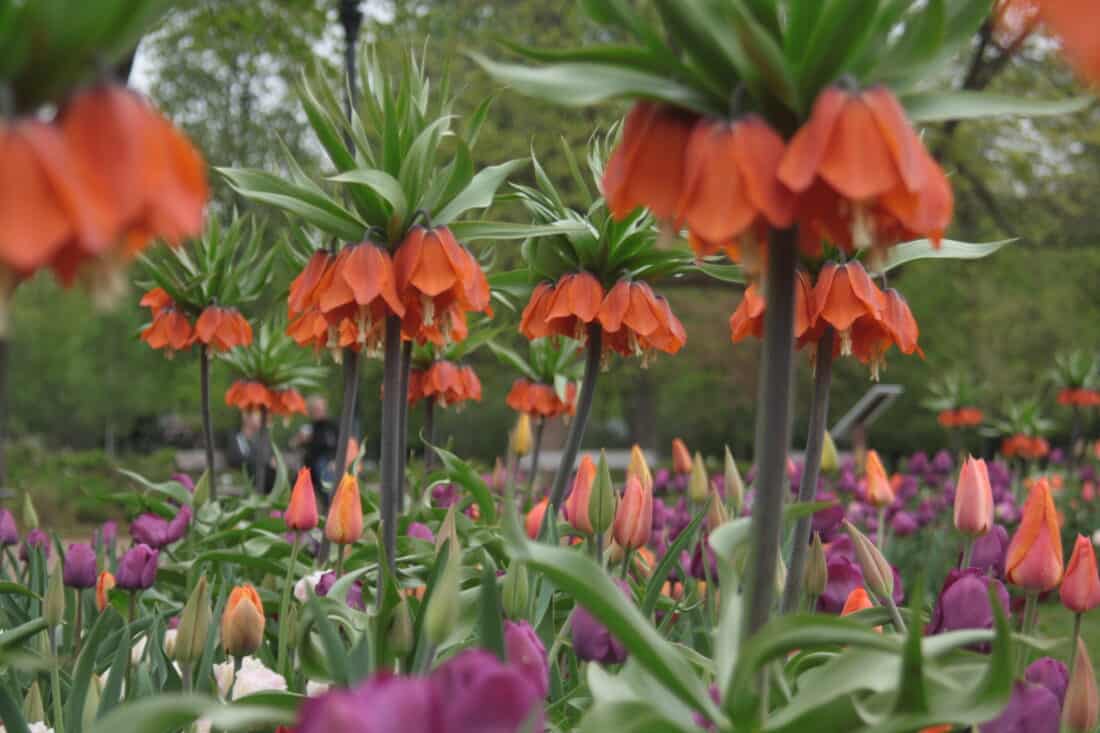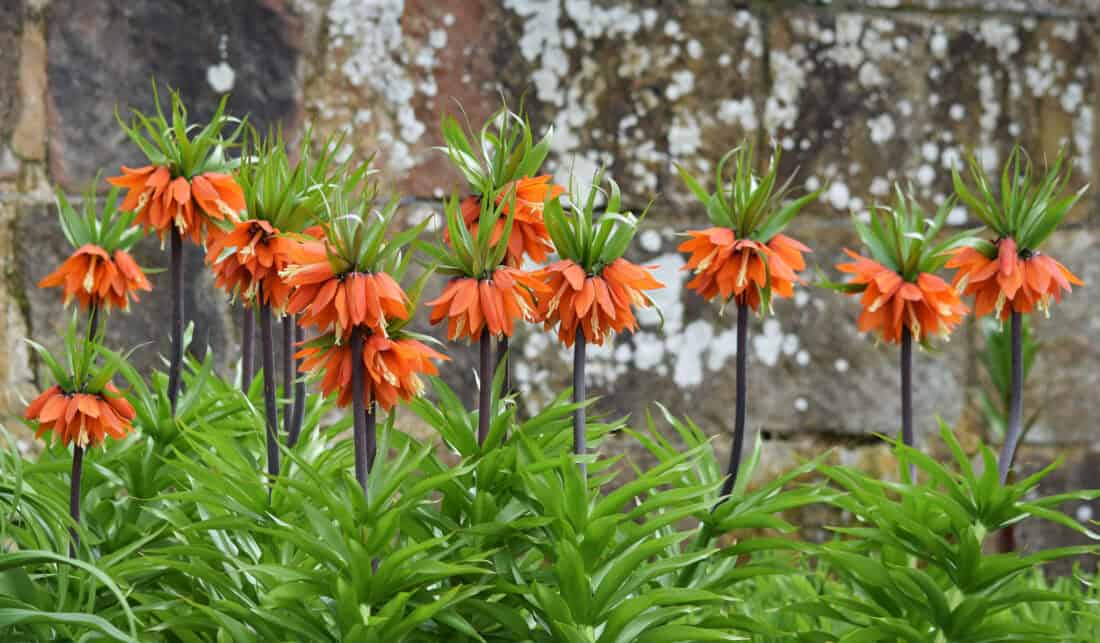After a winter that we will be talking about for winters to come along the East Coast, everyone is delighted more than ever to see spring arrive. One of the ways that we have come to welcome spring is with the arrival of flowering bulbs. Daffodils are, of course, the easiest; tulips are indeed the divas of the bulb world, and then there is a plethora of other bulbs to catch people’s attention. One of my favorite spring flowering bulbs is the yellow crown imperial or Fritillaria imperials ‘Maxima Lutea.


Crown imperial flower bulbs rise up in the spring, beginning with an eye-catching rosette of light green foliage. As the foliage continues to grow and expand, the flowering stalk begins to emerge.
Most garden visitors have never seen such a plant, so their curiosity is piqued. At the top of each flowering stalk is a tuft of green leaves that act as a shield over the flower buds. Once the flowering begins, a yellow ring of flowers resembling a circle of crowns that hangs down from the top of the plant.
Every rose has its thorn or in this case, every crown has its thorn. The thorn for the crown imperial would be the smell. These fritillaria stink. Even when the foliage is emerging, you can begin to get a whiff of something that is a bit off. As the stalk elongates and begins to flower, then you can really notice that something smells not quite right. A fully developed crown imperial smells like a skunk. An entire mass planting of crown imperials smells like Pepe Le Pew is having a family reunion.
Ok, maybe it is not really that bad. The smell is tolerable whereas a skunk will make your eyes water. And unlike seeing a skunk, crown imperials are so beautiful that you will not want to turn the other way when you see them.

As for culture, plant the fritillaria imperialism bulbs 6″ below the soil line in early fall.
They grow in USDA hardiness zones 5-8 so be sure to add an extra layer of mulch in the colder parts of zone 5. In areas with wet winters, you may want to plant the bulbs sideways to avoid crown rot. Crown rot occurs when water gets trapped into the top of the bulb.
After flowering, the bulbs will go dormant by late summer. Once established, take care not to move the bulbs as they prefer not to be disturbed.

If you are looking to add some dramatic spring bulbs to your landscape, be sure to check out the yellow crown imperials. They can grow 2 to 3 feet in height so they will make a real welcome statement in your garden after a long winter. Crown imperial flowers are also easily found in red or orange and they look particularly great when planted en masse and with other complimentary spring bulbs (like tulips).
–Rodney
Greetings from California! I’m bored to tears at work so
I decided to browse your site on my iphone during lunch break.
I love the knowledge you provide here and can’t wait to take
a look when I get home. I’m shocked at how quick your blog loaded on my mobile ..
I’m not even using WIFI, just 3G .. Anyways, awesome site!
Hey Rodney,
these pictures are amazing! In my hometown the spring leaves also his footprints 🙂 Everywhere we have now nice colorfull plants 🙂
Really love your articles! Pukh